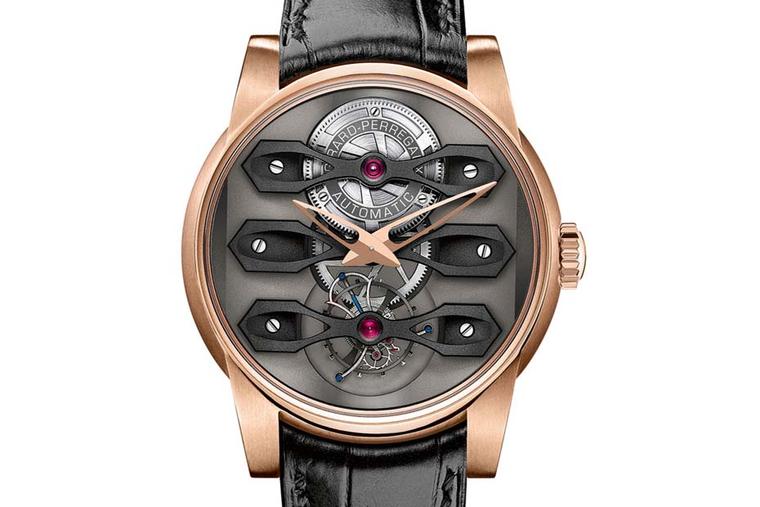
By Rebecca Doulton
Chambers of Wonders, also known as cabinets of curiosities, were displays of private collections of rare and exotic objects popularised in Renaissance Europe. Kings, rulers and anybody who could afford this pursuit would dedicate entire rooms to show off their treasures, which ranged from exotic stuffed animals and fossils to antiquities, maps and other objects of scientific interest.
Girard-Perregaux has created its own Chamber of Wonders with these hand-painted rose gold watches depicting three antique cartographic interpretations of the world. The model designed to contain these miniature wonders is the elegant Girard-Perregaux 1966 watch, which frames the beauty of the dial without deflecting attention from the exquisitely crafted maps.
Read more about watches with hand-painted dials
The New World Novus Orbis watch is inspired by the work of Sebastian Münster, whose Cosmographia cartographic collection of 1544, the first depiction by a German of the world as it was known then, sparked a revival in geography across Europe. His vision of the New World might seem quaint to us today, but the wealth of detail, including mountain ranges and local flora, was remarkable for the time.
The dial captures the warm colours of the original and the land masses have been made with stone marquetry to create a sense of relief complemented by miniature painting. Artisans cut, polished and set micro-stones of blue and pink aventurine, calcite and nephrite of just 0.50mm in diameter into a reduced space of under 40mm.
Travelling from the New World to the Far East, Girard-Perregaux watches also presents its Terrestrial Map watch. A tribute to the Italian Jesuit Matteo Ricci, whose missions took him around Asia, the theologian, cosmologist and astronomer was one of the first Westerners to penetrate the walls of the Forbidden City. Ricci redefined the 16th century state of global geography from a distinctive Chinese perspective. Little could Ricci have imagined how relevant his China-centric map is today.
Like the original map, the Terrestrial Map watch depicts five continents and four oceans, and characters on the map describe the Nile River as the longest in the world and even distances between Earth and some planets are listed. The dial of the watch is made from a white jade stone with translucent veins to add a perception of depth. Once the stone had been sculpted and polished to a thickness of 0.70mm, the skills of a miniature painter using natural India ink were enlisted to illustrate the famous map.
The Pearls of Wonders watch is drawn from the work of the 15th century historian Ibn al-Wardi and illustrates the advanced astronomical knowledge of Arab cultures intent on creating celestial maps and instruments for star gazing, like the astrolabe. The Mecca is the centre of this particular cosmography and the Nile is represented by a wide blue line flowing into the Mediterranean at a sharp right angle. In the centre, surrounded by the Red Sea and the Persian Gulf, is the Arabian Peninsula. A blue sodalite stone was chosen for the dial and then decorated with a mosaic of papyrus reeds, just 0.25mm thick, which was flattened and then painted by hand.
All three Girard-Perregaux watches in the new Chamber of Wonders collection are limited editions of just 18 pieces and come in 40mm rose gold cases with a Girard-Perregaux automatic movement for the hour and minute functions, visible through the transparent sapphire crystal caseback.
Cartography has never been closer to hand.

















